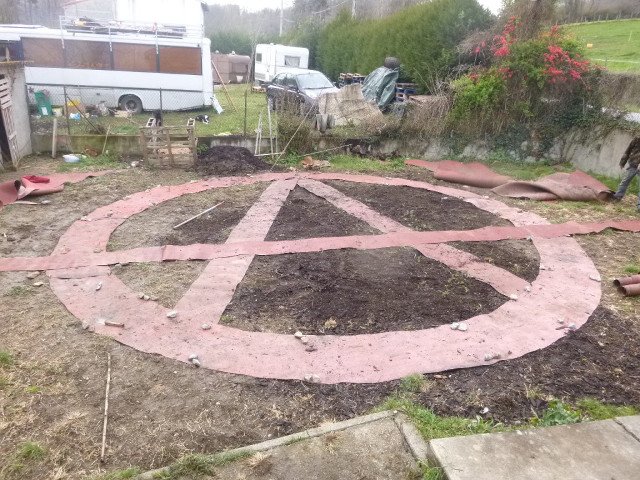
What I love about being nomadic, is the places we get to see, the people we connect with and the skills we learn and share.
In my last post, I mentioned a community squat that we visited and ended up living at for a while. This squat was in Saint Girons and was called le Palmier. It was really just getting itself off the ground when we arrived and we were happy to get involved. Their only wish was that upon entering Le Palmier you enter without any sexist , racist, authoritarian, discriminatory behaviours .

This was a space that believed in the practice of re appropriation of urban spaces,claiming the right to live free, to meet, to realize a dream of society "Free and Fair" while at the same time improving our daily lives. They believed that the logic of domination and exploitation orchestrated by the law of banks and maintained by a power that submit and isolate, can be destroyed by the Collective Reflection, the Self-Organization, the Mutual Aid and community. This was exactly what we as a family wanted to get involved in.

So how to get involved?
I studied a permaculture design course back in 2011 and to me it felt like coming home, so much of what I learnt resonated deep within me, it became my way of life.
So I came up with the idea of creating an anarchy garden!
The idea was to grow food and at the same time reflect the views of the squat. So the dream was hatched and the design was drawn after taking measurements of the space we had to work with. The most important thing was to get the pathway down so as not to walk on the soil where we would be planting the food. I used a roll of semi permeable flooring that we upcycled from the abandoned wood/paper mill behind the squat.



I didn't know the quality of the soil on the land and there was no funding to pay for a soil analysis, so I concentrated on feeding the soil as best I could. Their was alot of de composted wood chip on the grounds of the paper mill that we brought over to the land. We also put the shout out for horse/pony/mule manure and we were lucky to get some that was over a year old. So we mixed those together with the existing soil. I'm not a fan of digging, but that earth was so compact and dry that it was good to do it initially.



Everything needs to be in balance, so on top of that lovely layer, which was definitely high in carbon, we wanted to add a layer of nitrogen. So off we went for a family day out to gather some nettles and dandelions. As it was March, we didn't have to go far to find them. We all had our glove on and only took some from places where they were in abundance. We let these wilt for a day in the sun and then added them to the garden beds.



After this we put some cardboard on top, which we had soaked in water. We made sure that the cardboard we lay down overlapped so that only the plants we planted would grow. Using cardboard is a great way of helping the soil maintain a constant temperature and to also help keep moisture in the soil. We then watered the cardboard again, it's amazing how quickly it dries out. On top of this we put more woodchip.


I added a stone path at the bottom of the A so that we could access the beds without having to walk on them. We made 7 beds in total and planted a mixture of salad, spinach, broccoli,mint, beetroot, calendula, carrots and onion. I didn't take anymore photos after this, I wish I had. We left not long after to go to a festival and make some money. When we returned the community chickens had got in to the garden, after the gate was left open and they made a feast out of the garden.
Initially I was upset, but having the opportunity to be creative and the space to actually bring that creation to life was great.
There are a few other projects that I done at this space that I will share with you all on here again.
To be continued...................

